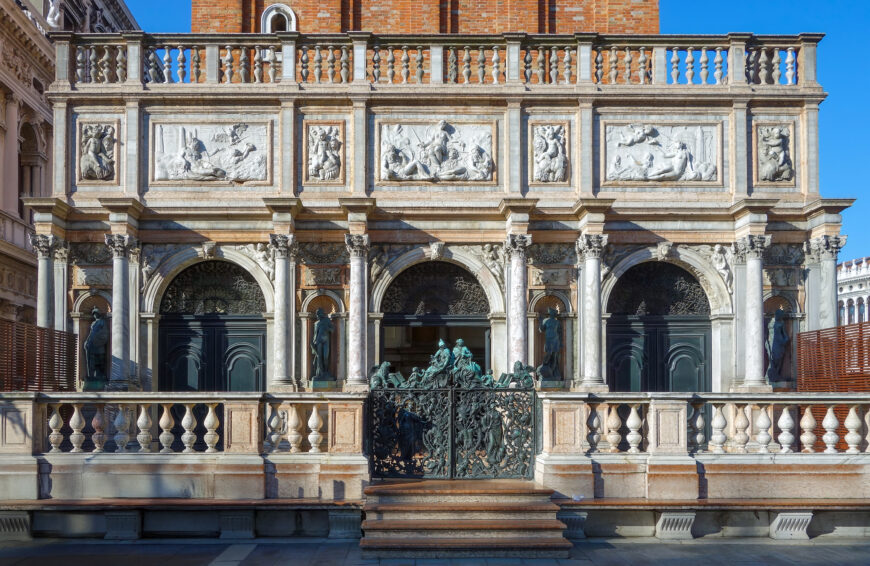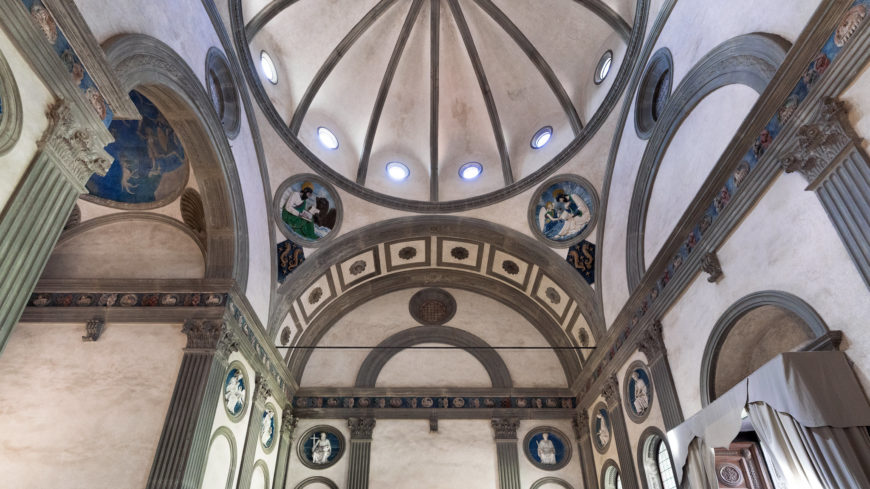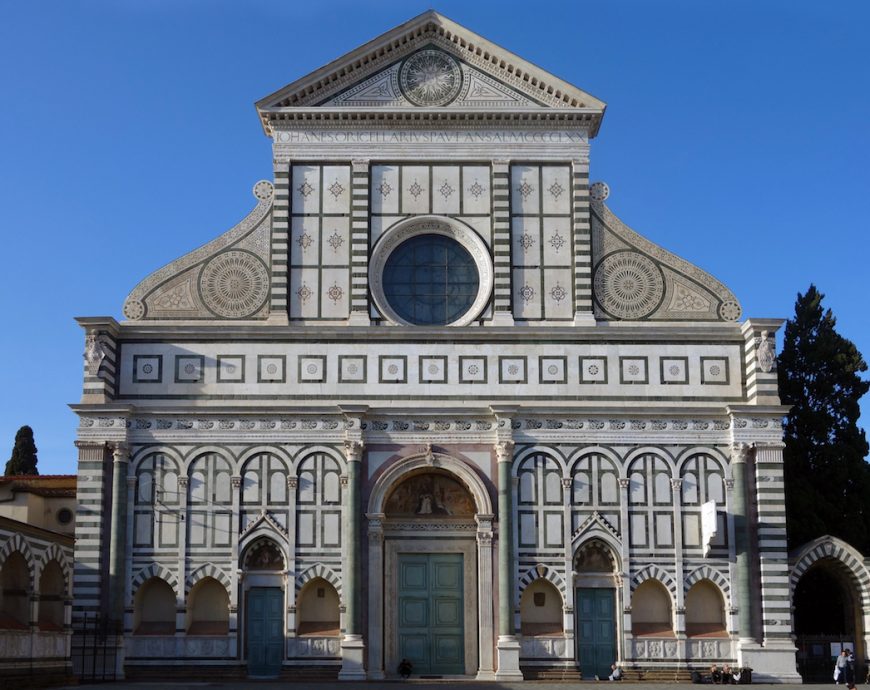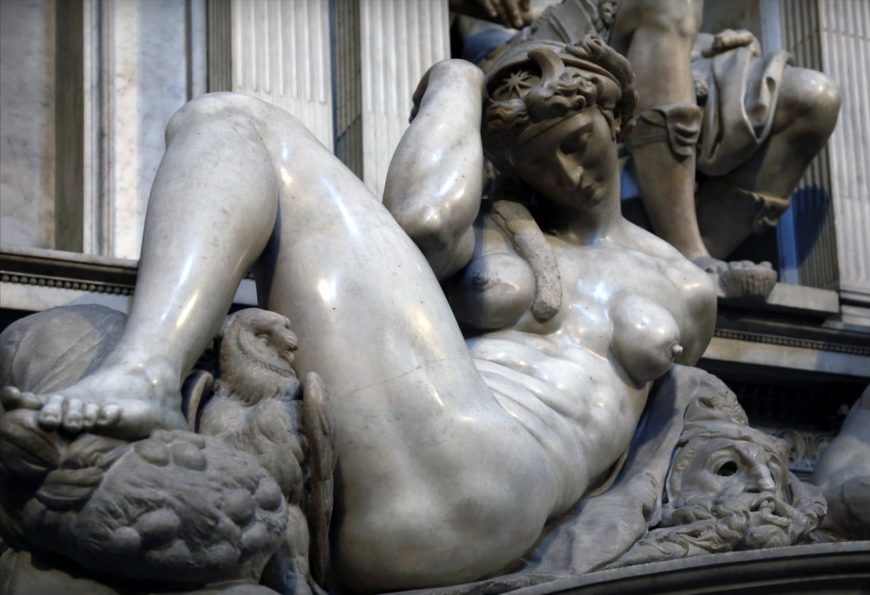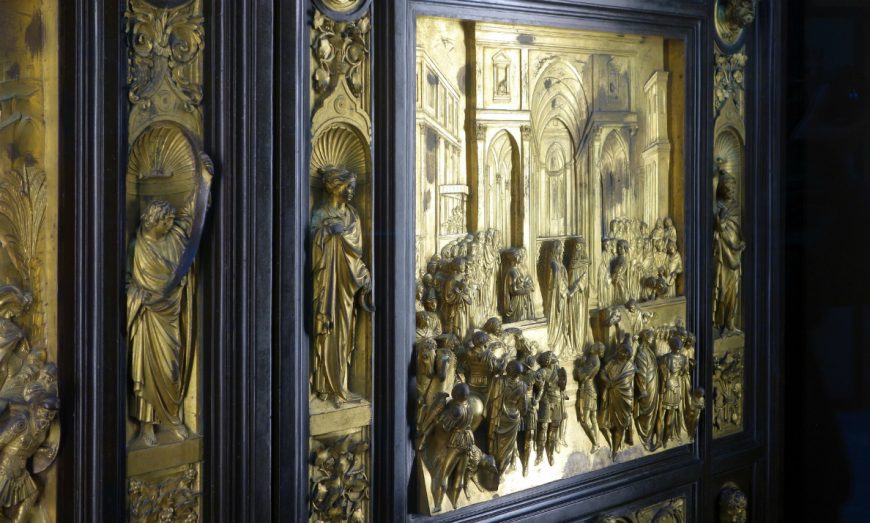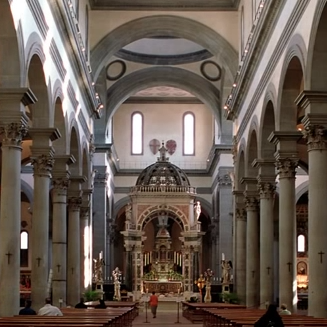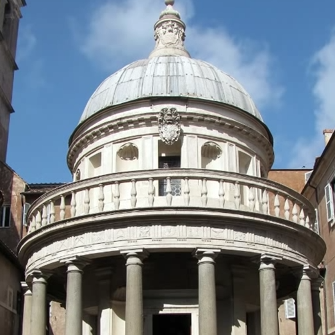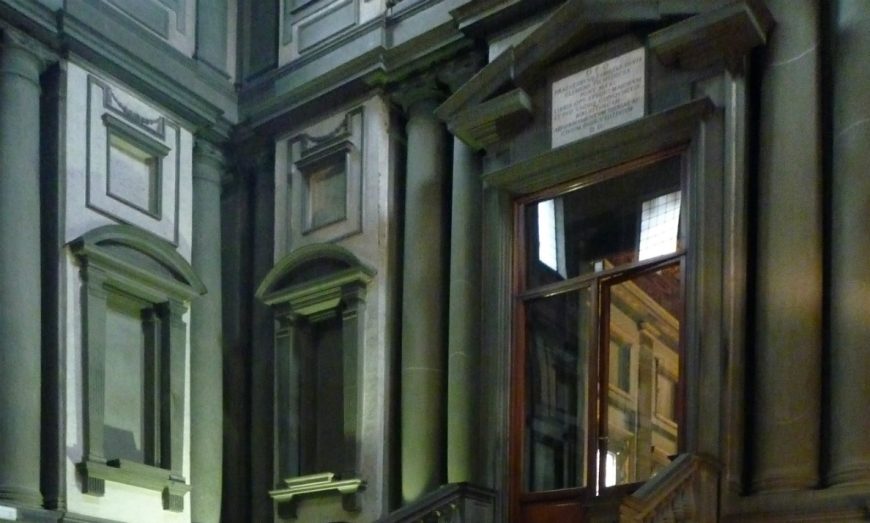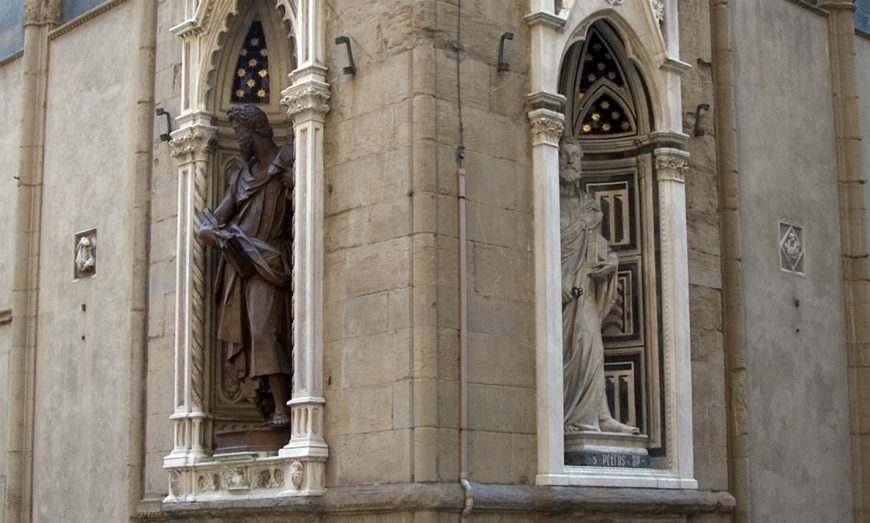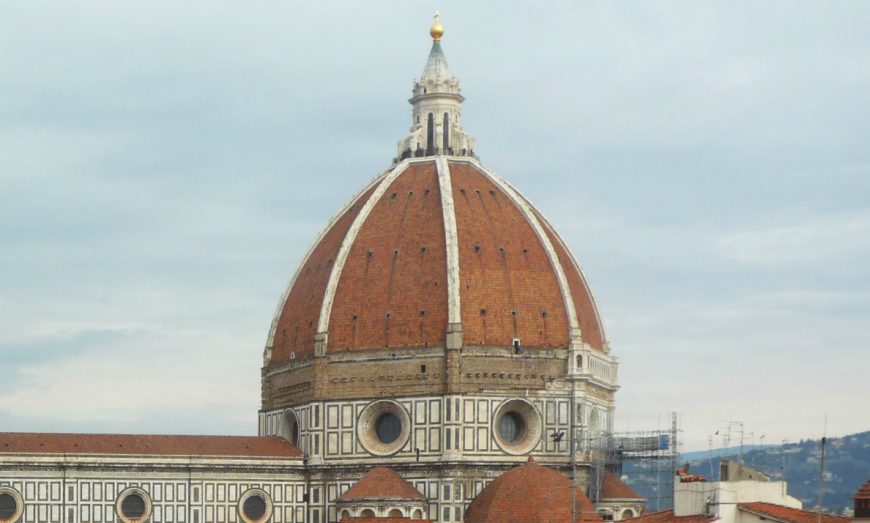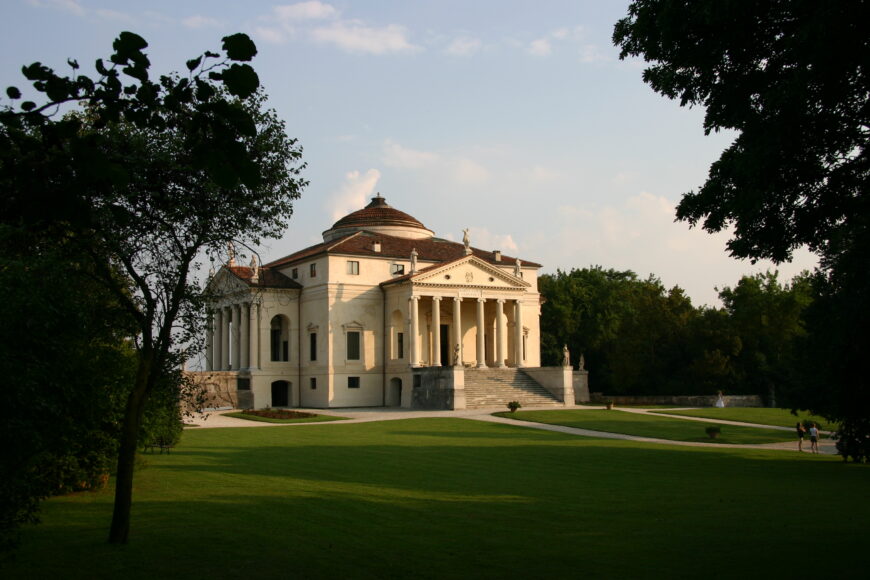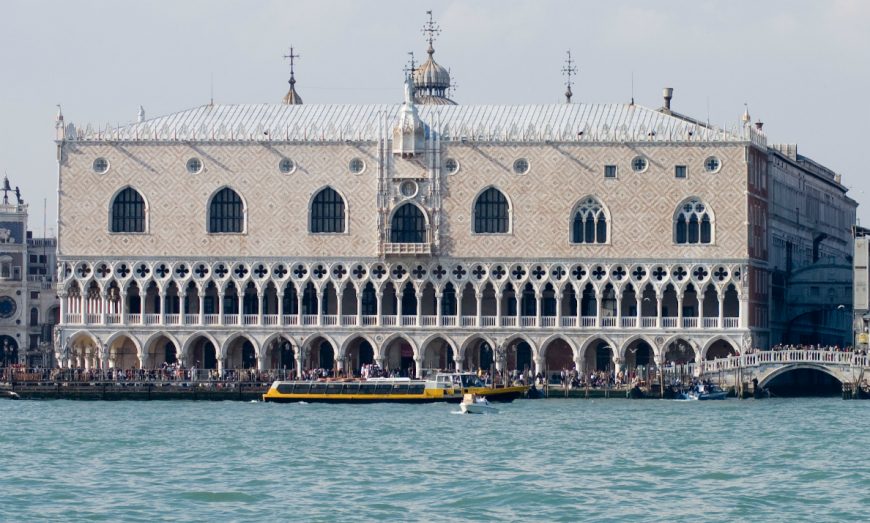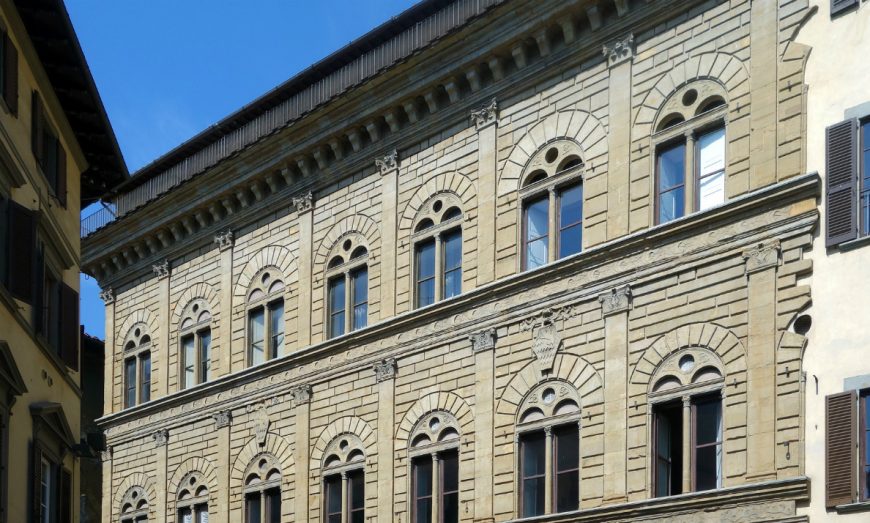Michelozzo di Bartolomeo, Palazzo Medici, Florence, begun 1444; a conversation with Dr. Steven Zucker and Dr. Beth Harris
Michelozzo di Bartolomeo, Palazzo Medici
[0:00] [music]
Dr. Steven Zucker: [0:04] We’re in Florence, looking at the Palazzo Medici.
Dr. Beth Harris: [0:07] The Medici Palace, and we’re on a busy street in Florence. This is really in the heart of Florence.
Dr. Zucker: [0:13] In fact, it’s situated at a point where Cosimo had to buy the properties of some 22 landowners in order to be able to build what is a magnificent and enormous palace. It’s a palace that has a view of the most important religious sites in the city.
Dr. Harris: [0:28] The Duomo, the Cathedral of Florence.
Dr. Zucker: [0:30] And the Baptistery. In fact, we have a direct view down the street to the Baptistery.
Dr. Harris: [0:34] The place where all the citizens of Florence were baptized.
Dr. Zucker: [0:36] If we look the other direction, we see San Marco, which was a monastery that the Medici family underwrote. They were the primary patrons.
Dr. Harris: [0:44] We also see San Lorenzo, which is their parish church, which they also supported and endowed and had rebuilt and even had funerary chapels built there.
Dr. Zucker: [0:55] Now, in the 14th and especially in the 15th century, the city of Florence had become extremely wealthy. Its wealth came largely from manufacture and largely from the production of wool, but then increasingly banking became an important source of wealth.
Dr. Harris: [1:10] There were several leading families in Florence, the Medici being the most prominent.
Dr. Zucker: [1:15] Now, the Medici family would be in, they would be out. There were times when the Medici family was exiled. There were times when the Medici family was ruling explicitly. There were other times when the Medici family was simply pulling all the strings behind the scenes.
[1:28] I think now in the 21st century, it’s easy for us to correlate somebody who has a lot of wealth [with] living in a splendid home, but in the 15th century, ostentation had a price.
Dr. Harris: [1:37] It was morally and spiritually questionable.
Dr. Zucker: [1:41] And so just because you had a lot of money didn’t mean that you should necessarily spend it on a grand edifice.
Dr. Harris: [1:48] Yet Cosimo did. The citizens of Florence were intended to understand this as a way of Cosimo of the Medici family ennobling Florence itself, contributing to the beautiful appearance of the city that they were so proud of in the early 15th century.
Dr. Zucker: [2:05] One of the ways that this building pulls that off is by referencing the classical tradition. We can see these beautiful, elegant voussoir[s] rounding the arcade that was originally open. We’re calling this a private home, but in fact it was a much more public space than we might expect.
[2:21] Although this building is fortress-like, although it seems tremendously solid and protective, it was meant to be a place where the city could enter, where business could be conducted.
Dr. Harris: [2:30] You used the word “fortress-like,” and I think that’s important because this building is looking back to a building a few blocks away, the Palazzo Vecchio, the town hall of Florence, which does look very much like a fortress, which had been built a hundred years earlier.
Dr. Zucker: [2:45] This palace refers to the Palazzo Vecchio in a very specific way, and that is the rusticated masonry. On the ground floor of this building, we see these huge blocks of stone that have not been polished, that have not been finely cut, that feel rough, that feel heavy, and the density of that material is so tangible.
[3:04] Look at the way that those stones are cut, not only to refuse the sort of clarity of a flush surface, but they’re also cut irregularly so that there is no uniformity of size.
Dr. Harris: [3:15] While the ground floor has a sense of being like a fortress, there’s a clear recalling of classical antiquity, of ancient Roman architecture and therefore a sense of Renaissance humanism that this building would have communicated.
Dr. Zucker: [3:29] There are classical references everywhere. There’s the voussoir[s] over the Roman arches. There are Corinthian columns in the window bays and then just at the bottom of the cornice, there’s egg-and-dart and dentil motifs, and then of course there’s the cornice itself, which is this massive form that comes right out of the classical tradition and really stops our eye from moving past the building.
[3:51] Inside is a courtyard, which comes directly out of the Roman tradition, with a lovely Brunelleschian arcade.
Dr. Harris: [3:57] All of this within the context of the incredible wealth of the Medici family, the political power of the Medici family, looking back to the classical tradition.
Dr. Zucker: [4:07] And looking forward to a building boom in new palace architecture by wealthy Florentines. This building, in a sense, gave permission for the other great ruling families to build their own immense palaces.
[4:18] [music]
| Title | Palazzo Medici |
| Artist(s) | Michelozzo |
| Dates | begun 1444 |
| Places | Europe / Southern Europe / Italy |
| Period, Culture, Style | Renaissance / Italian Renaissance |
| Artwork Type | Architecture |
| Material | Stone |
| Technique |


